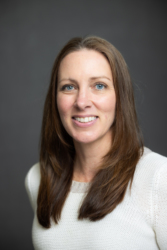Los Angeles, CA—Wildfires continue to devastate Southern California, with the Los Angeles Times reporting today that a “particularly dangerous situation” warning is once again in effect for areas of Los Angeles and Ventura counties. At least 25 people have died.
L.A. Times reported that the firestorms are expected to be the most costly in U.S. history; officials estimate that more than 12,000 structures have been destroyed, including many homes. As WholeFoods Magazine has reported, businesses are doing what they can to assist those in need.
Impact of the loss of small business
The loss goes much deeper, as well. "What we’ve seen from the pictures is just heart-breaking devastation for multiple communities from not only losing their homes but also the businesses and local beacons that have kept these communities together," Dr. Irwin said. "Small, local businesses of all types in these impacted areas are likely to face a long road ahead for rebuilding and an uncertainty over how much insurance (if any) will cover their losses. This is particularly important in the Southern California market where land prices and construction costs are very high. This may cause some local businesses to not rebuild or relocate, which means the local residents, as they rebuild, won’t have the same restaurants and grocers in their future neighborhood. This means that the unique charm of their neighborhoods will be lost. I would imagine these small businesses may also suffer from losing employees who, having potentially lost their job and home, face a difficult choice on what to do next in their life."
"It is hard to fathom the total destruction that occurred, but the residents are resilient and community oriented," Gooch stressed. "It is time for collective reimagining on how to rebuild Altadena, and other fire-ravaged communities, and implement the significant changes that need to be made – environmentally, politically, protection of natural resources, building codes…Yes, there are opportunities to take a ton of lemons and make some lemonade. Can we do it?"
Looking ahead
Dr. Irwin has conducted research on wildland-urban interface (WUI), which is a term commonly known in areas that experience wildfires, typically in western states. The UNLV study, published in the Journal of Regional Science, explores the link between wildfire risk and how it impacts residential development in these fire-prone areas. Regarding the current fires, Dr. Irwin tells WholeFoods Magazine: "We are building in the WUI at a rapidly increasing pace, which exposes all of that development to the risks of wildfire. There is an estimated 45 million residential units in the WUI space according to the most recent estimates, which is a near doubling of that amount in 1990. While part of the sprawl into this space is due to the societal need to provide more housing for a growing population, doing so exposes a cost to everyone in society. Couple with climate change and the droughts in the Western U.S., it shouldn’t be surprising that 9 of the 10 most destructive fires have occurred since 2017 in these same spaces (https://www.iii.org/fact-statistic/facts-statistics-wildfires). Not only does this pose a cost on homeowners and insurers to cover these loses, it impacts all of us as well. We are spending more money on fighting wildfires, which means some local governments may have to make a trade-off in terms of funding other important items (new schools, new playground, roadwork, etc.). These same governments are also facing a loss of their tax base, as businesses are lost, meaning financial hardships may be magnified. Even those of us who do not live in these areas are impacted through higher insurance premiums, as insurers have to spread the risk and losses to all of their policy holders. I think building into this space is a big contributor to these fires, but there are also some public investments that would have been helpful that were never made (looking at you, above ground power lines)."
When the area begins to look to rebuilding, what factors should be considered?
"I hope that we, as a society, consider the cost of building in these areas in the future, but I am skeptical," Dr. Irwin said. "Development in this space imposes an externality on all of society but addressing it is complex. Some things we could consider would be encouraging denser development and revising zoning in existing areas to encourage more housing be built in cities and urban areas and not at these interfaces. We should also encourage adoption of defensible spaces, which can help protect homes that are built in these areas from falling victim to fires. We probably need to have a hard look at current fire/wildland management and proscribed burns, as what we are doing now is clearly not working. We should also work to eliminate some very clear and obvious sources of ignition and consider building resiliency in our electrical grid and/or burying lines when possible."
Looking at the immediate need, Gooch encouraged industry members:
"These horrific fires are also an opportunity for those in the Natural Products Industry to donate products to people in need, or who have lost their homes, and to the police and fire departments. These gifts help to sustain them during this tragic time and the products will be remembered by many of the recipients." Find a list of resources from Gooch, as well as efforts being made, here.
Dr. Bronner's is among those making an effort. The company shared on social media: "For the past week, our Magic Foam Experience team & other staff have been gathering soaps, food, new clothing, pet food & more to help our neighbors in Los Angeles who've been affected or displaced by the fires. Dr. Bronner's will be giving more than $175k in product & financial donations." In addition to its Magic Foam Experience team, Dr. Bronner’s Engagement team worked with other staff as well as LuvWorx, Lived Experiences, and Rolling Wheel to distribute donations.
For those who want to donate but aren't sure where to give, Dr. Bronner's shared a list of organizations:
- Mutual Aid LA Network, which Dr. Bronner's said is "a connector and information hub for mutual aid efforts in Los Angeles who we have supported for many years. They are doing a lot to coordinate different outreach and mutual aid groups across LA, including creating and maintaining this Fire Resource list: drbronner.net/mutualaidfireresourcelist."
- The Side Walk Project LA, which Dr. Bronner's said is "street outreach serving unhoused and vulnerable people in LA. Their team has been working 24/7 responding to the overlooked needs of LA’s homeless population who have been displaced."
- GlobalGiving, which Dr. Bronner's called "a trusted foundation we’ve worked with in several other disaster situations. Global Giving raises money during disasters, and then quickly regrants to grassroots & local organizations all over the world. They do an exceptional job of maintaining support over time after other funders are long gone."
Help for small businesses
Key information in shared in the L.A. Times article For uninsured fire victims, the Small Business Administration offers a rare lifeline. The report notes:
- Businesses, nonprofits, and small agricultural cooperatives can apply for an economic injury loan (intended to help businesses meet ordinary financial demands) or a physical damage loan (which provide funds for repairs and restoration) through SBA.
- Homeowners are eligible for physical damage loans.










